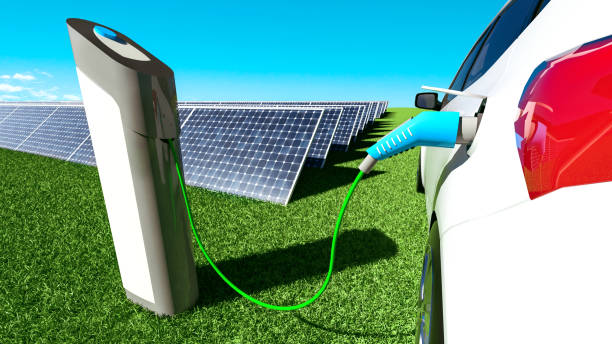
America’s automotive sector envisioned a completely electric future just two years ago. That optimistic vision has dimmed considerably following the Trump administration’s elimination of federal EV incentives, fundamentally reshaping industry expectations and consumer behavior patterns.
Sales Projections Plummet After Tax Credit Elimination
The immediate outlook appears challenging. Industry experts anticipate the termination of the $7,500 federal tax credit will trigger substantial sales declines throughout upcoming quarters and potentially for years ahead.
However, global automakers haven’t abandoned electric vehicle development entirely. Manufacturers continue channeling investments toward electrification—though no longer exclusively electric as previously anticipated. Regulatory uncertainty surrounding gasoline-powered vehicles across major US markets and international territories keeps automakers hedging their strategies. Additionally, they’re determined not to lag behind China’s formidable EV expansion.
Daniel Ives, technology analyst at Wedbush Securities, observes that while companies have moderated their all-EV positioning, Ford, General Motors, Stellantis, and numerous competitors will maintain aggressive electric vehicle pursuits. The difference lies in their more calculated, cautious approach compared to several years ago.
The tax credit’s expiration triggered a third-quarter EV purchasing frenzy as buyers rushed to secure vehicles before losing the discount. Tesla, Ford, and General Motors each recorded their strongest electric vehicle sales periods ever. GM particularly stood out, more than doubling its year-over-year American EV sales. Tesla’s surge reversed six consecutive months of declining figures.
Following this spike, industry leaders expect EV sales will decline sharply and remain suppressed for an extended period. While electric vehicles comprised 10% of total US car sales last quarter, Ford CEO Jim Farley projects that proportion will drop to 5%—down from approximately 7% in the previous year. General Motors CFO Paul Jacobson similarly anticipates that EV demand will decrease dramatically.
Major Investments Continue Despite Market Headwinds
Despite pessimistic near-term forecasts, Ford announced a $5 billion EV production investment in August, characterizing it as their “next Model T moment”—referencing the historic vehicle that popularized internal combustion automobiles over a century ago.
Farley acknowledges the industry will remain vibrant but substantially smaller than previously projected, particularly given policy reversals. Hyundai similarly maintains its US EV investment strategy despite immigration officials arresting 475 workers at a new Georgia EV and battery facility under construction.
Hyundai CEO José Muñoz emphasized at a recent investor presentation that their facility design enables flexible transitions between EV and gasoline vehicle production based on market demand fluctuations.
Biden administration regulations originally mandated EVs comprise 50% of American new car sales by 2030, imposing significant penalties on automakers missing targets. These requirements largely drove the initial industry shift toward electrification.
The Trump administration has substantially rolled back those regulations. Republicans eliminated steep financial penalties for emissions violations in their July tax and spending legislation.
California alongside eight states—Massachusetts, New Jersey, New Mexico, New York, Oregon, Rhode Island, Vermont, and Washington—had implemented mandates effectively banning gasoline vehicle sales by 2035. These states collectively represent roughly one-quarter of US automobile sales.
Congress recently moved to terminate California and other states’ authority to impose stricter emissions standards. This battle has entered federal courts where resolution could span considerable time—potentially allowing administration changes within the next decade to reinstate the 2035 ban. Europe and China continue advancing stricter emissions regulations that may compel electric vehicle adoption.
Automakers also pursued higher stock valuations through EV strategies. Tesla maintains dramatically higher market capitalization than any competitor despite selling fractional vehicle volumes. This valuation gap existed before CEO Elon Musk and Wall Street supporters began promoting unrealized robotaxi and autonomous robot visions.
Rather than committing exclusively to battery-electric vehicles, manufacturers now emphasize hybrid technology combining electric motors with internal combustion engines. Ives notes that while aggressive EV development continues, traditional engines are no longer taboo as companies return to their core competencies.
American automakers report that market demand for all-electric vehicles hasn’t matched gasoline-powered alternatives. Jacobson stated that prior Biden regulations would have severely constrained the US auto industry by prohibiting internal combustion vehicle sales at natural market volumes. Despite regulations and the $7,500 tax credit, customer adoption failed to meet government expectations.
Nevertheless, Jacobson maintains GM anticipates long-term EV demand growth even without tax credits and all-electric support. The company aims to meet this evolving demand after allowing markets to stabilize and identifying natural demand levels—a process requiring time and potential operational adjustments.
EVs offer competitive advantages: production requires fewer labor hours than gasoline vehicles with complex engines and transmissions, potentially yielding higher profitability. Demand could resurge if production costs, especially battery expenses representing substantial vehicle costs, continue declining. Virtually every manufacturer announces plans for less expensive battery technology.
Ford’s $5 billion investment includes plans for a $30,000 EV pickup—among the market’s most affordable options—compared to the $55,000 F-150 Lightning starting price. The new production line should be operational by 2027.
Doug Field, Ford’s chief EV digital and design officer, stated Monday that they drew inspiration from the Model T’s transformative impact, believing this represents a pivotal moment for Ford and the broader automotive industry.



